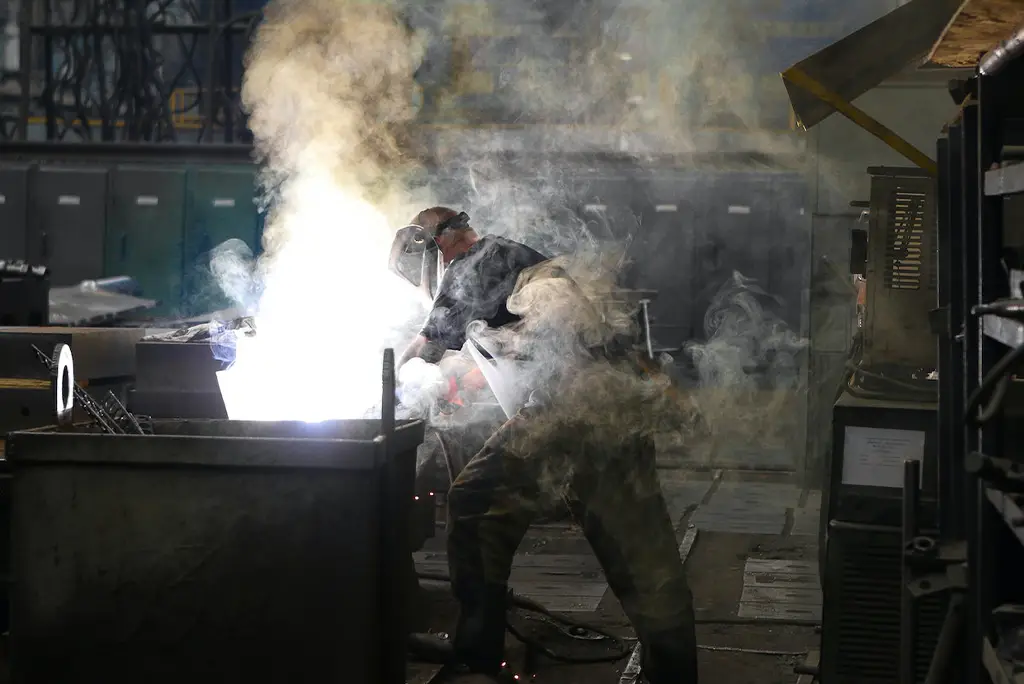A monthly survey revealed that India’s manufacturing sector activities moderated in June. The S&P Global India Manufacturing Purchasing Managers’ Index (PMI) fell from 58.7 to 57.8. The decline in the PMI suggests a decrease in manufacturing sector performance.
S&P Global compiles the S&P Global India Manufacturing PMI by collecting responses from purchasing managers. Moreover, questionnaires are sent to a panel of approximately 400 manufacturers. The panel is stratified based on sector, company workforce size, and GDP contributions.
Additionally, the data collection for the PMI began in March 2005. The primary aim of the survey is to gather insights into the manufacturing sector’s performance in India. Purchasing managers provide input on various aspects of their manufacturing operations.
Furthermore, the PMI is a valuable indicator of the sector’s health and economic trends.
Improved Operating Despite the Decline in PMI
Despite the decline, operating conditions in the sector still showed considerable improvement. Manufacturing output remained in the growth territory, supported by sharply expanding new work orders. Favourable demand conditions played a significant role in driving the expansion of new work orders.
The June PMI data indicated an improvement in overall operating conditions for the 24th consecutive month. A PMI score above 50 signifies expansion, while a score below 50 suggests contraction.
The June PMI data highlight the sustained positive momentum in the manufacturing sector. Additionally, Indian-made products benefited from favourable demand, which drove the industry’s growth. Furthermore, due to strong client interest, the manufacturing industry witnessed increased output and employment.
The strength of demand positively influenced various measures, such as sales and production. The survey indicated that sales performance, in particular, was positively impacted by strong demand.
Production levels also experienced growth, reflecting favourable demand conditions. The survey further revealed that stock building and employment also improved due to demand strength. The manufacturing sector’s overall performance reflected positive momentum despite the moderation in June.
The survey highlights the resilience of India’s manufacturing sector amid favourable demand and improving operating conditions.
Pollyanna De Lima said demand for Indian-made products remained strong in domestic and international markets.
The manufacturing industry benefited from positive client interest, leading to growth in output and employment.
Robust demand supported the expansion of quantities of purchases and input stocks in the sector. The continuous improvement in operating conditions reflects the resilience of the manufacturing industry.
The expansion of quantities of purchases and input stocks can be attributed to robust demand. Additionally, the manufacturing sector’s performance reflects sustained growth and positive market dynamics.
Furthermore, Pollyanna De Lima’s comments underscore the positive impact of client interest on various aspects of the manufacturing industry.
According to Lima, the surge in input buying indicates manufacturers’ optimism and proactive approach. Consequently, manufacturers sought to capitalize on favourable market conditions and acquire resources to support production growth.
Positive Data
Optimistic growth prospects were supported by demand strength, new client enquiries, and marketing efforts. The survey reported a six-month high in the overall level of business confidence.
Goods producers increased employment to expand capacities, similar to the pace seen in May. Goods producers hired additional workers to meet rising demands and expand operations. Positive demand trends and increasing output needs drove substantial additional input buying.
The increase in inputs buying was the second-strongest in over 12 years. Business confidence improved due to favourable growth expectations and positive market conditions. Employment in the manufacturing sector experienced moderate growth in June.
The survey indicates that goods producers actively respond to rising demands and increase output requirements. Consequently, driven by a combination of strong demand, rising output needs, and positive business confidence, they implemented expansionary measures.
Moreover, positive demand dynamics and increased labour costs played a role in contributing to higher charge inflation. Specifically, charge inflation reached a 13-month high due to buoyant demand and greater labour expenses. In response to this robust demand, manufacturers adjusted their pricing strategies.
The Pricing Strategy
The latest increase in output charges demonstrated firms’ ability to pass on higher costs to customers. Manufacturers maintained a competitive edge while adjusting pricing strategies to accommodate higher cost burdens.
Buoyant demand provided an opportunity for manufacturers to adapt their pricing strategies. Manufacturers could pass on higher costs to customers due to strong demand.
The surge in input buying reflected manufacturers’ proactive response to favourable market conditions. Manufacturers sought to obtain resources for supporting production growth amid positive demand dynamics. Combining proactive measures and pricing adjustments allowed manufacturers to navigate market conditions successfully.
Read More: Deloitte to Have 30% of Workforce in India by 2027
Madras High Court Reserves Judgement on Google’s Billing Policy
Indian Government Plans Multi-billion Dollar Battery Subsidy Scheme
